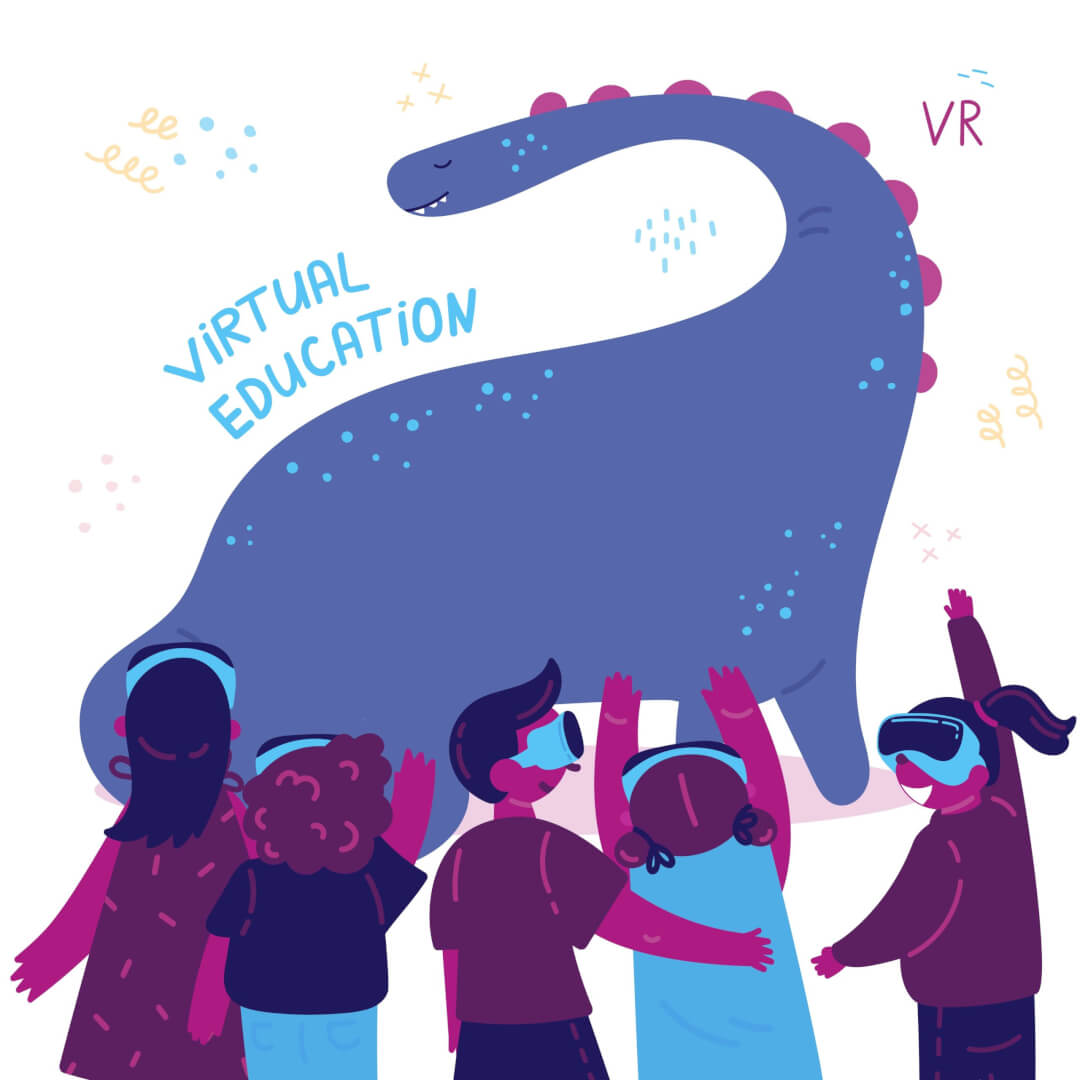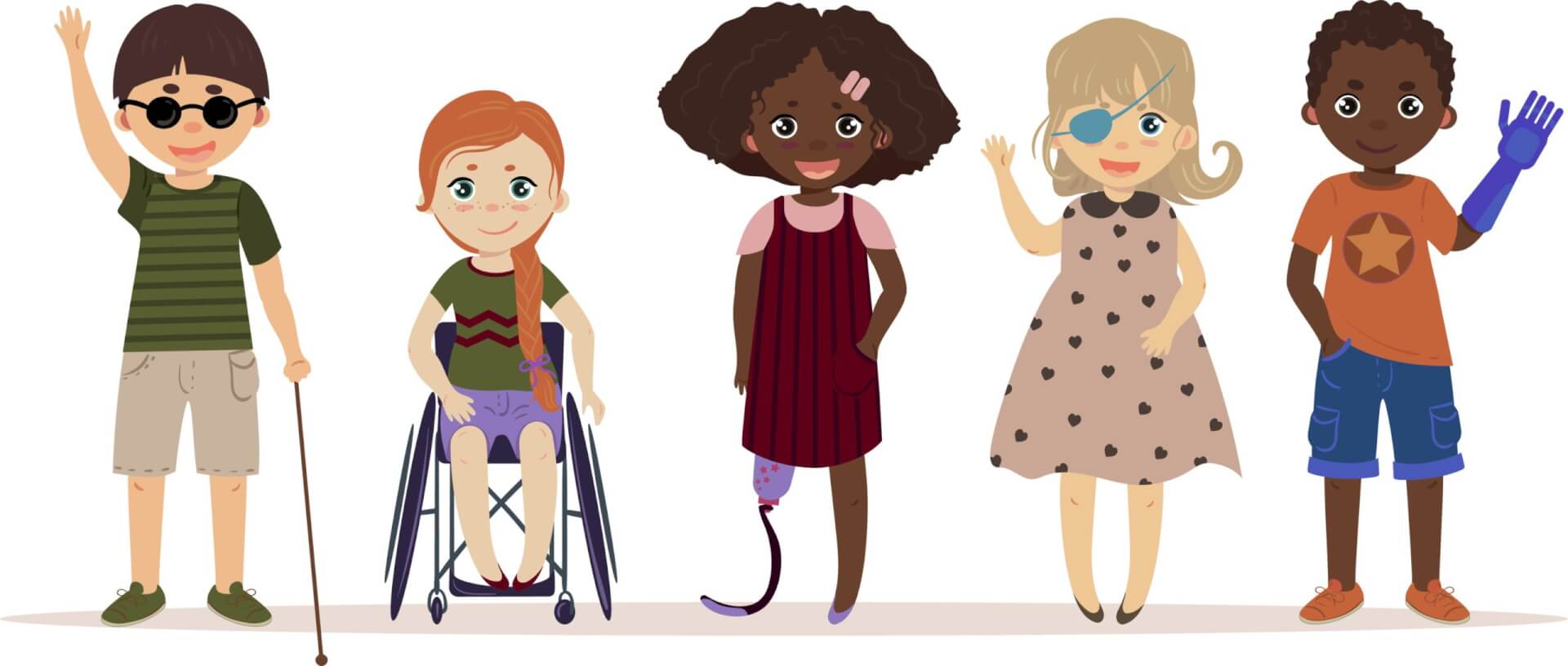Explore a selection of Olha’s work here.
Olha has been with Alamy for over three years, and in that time, she’s built up a delicately illustrated collection of vectors that will add a topical zing to any graphic design. We spoke to Olha to find out more about the artist behind the illustrations to see what makes her tick, and why art is important.
Hi Olha. Can you tell us a little bit about yourself and how you got into vector art?
Hi, my name is Olha Khorimarko. I was born and live in Kyiv, Ukraine. I work as an illustrator, but I studied as a ceramic artist. I’m interested in everything related to art. I love graphics and hand printing, such as linocut. And I’m in love with theatre, cinema, literature and travel.
I became interested in illustration while studying at the Mykhailo Boichuk Academy of Decorative Applied Arts and Design in Kyiv. I wanted to turn it into one of my professions, so I started developing in vector art.
What drew you to digital art? Why are you making these types of graphics?
I like being a multi-specialist and I like learning new skills. That’s why I started studying digital art. The world is constantly changing, so it’s important to be able to work in different areas of graphic design to meet the needs of today. Digital art allows me to be mobile and gives me new visual tools for creating illustrations.
How would you describe your art style?
In illustration, I like the conciseness of forms and patterns. I also like to emphasize shapes with details and use complex colour combinations.
Who influenced your art style?
I’m inspired by the work of impressionists, and modern Ukrainian and world illustrators. This allows me to use a mixture of interesting techniques. But I’m also inspired by nature and wildlife.
If you weren’t making vector graphics, what do you think you’d be doing?
I would do art anyway. I’m a ceramic artist by education, so I would dedicate more time to sculpture. I’m also interested in psychology and human rights. So I think I could develop in these areas.
Do you think you’re still developing your artistic style, and if so, where do you think it’s going?
Yes, in my opinion, the artist’s style is always in development and improvement. Every now and then, I try something new in my style by playing with proportions, patterns, composition and seeing how my illustration will look better. At the moment, I’m working on making my characters visually more interesting. So I’m experimenting with form and dynamics.
What influences what you draw on any given day?
I choose a theme for my illustrations based on several criteria. The first is what I want to say and what topic I want to raise in the illustration; questions that concern me personally. The second is: what is happening in the world and what is needed right now? I also pay attention to topics which are poorly covered and try to analyse what I can offer on this topic.
What does visual communication mean to you?
Visual communication, for me, is the best way to convey information and meaning. With the help of illustration, you can quickly convey the depth of an idea and the power of a message. It’s important to convey the idea succinctly so that it can be read quickly. It’s also important for the illustration to be interesting in style and attract attention.
I love the diversity of your imagery. It’s extremely heart-warming and wholesome to see. What do you think we, the world, needs to do to be more empathetic and understanding of each other?
Thank you, it’s very nice that it’s noticeable. I think it’s important for all of us to learn not to judge anyone for their choice. I dream that the time will come when there will be no discrimination in the world.
Also, it’s very important to be able to talk about your desires and worries and sincerely listen to others. Know your psychological boundaries and do not cross others. I think it’s important to give up stereotypes and respect each other.
What would your dream project be?
My dream is to create illustrations on socially important topics. Uncover important questions with the help of visual metaphors. So my dream is to work on a cover illustration for The New Yorker magazine.
How would you describe your workflow?
My workflow can be very different from day-to-day. But there are important points that set me up for a productive, enjoyable workday. This includes exercise, a delicious breakfast with coffee, and an hour to myself before work.
It’s also important for me to start the working day in the morning. I’m motivated by the light and the calm of the morning. First, I look for topics to work on. Then I analyse the topics and start working on the sketches. Later, I move on to painting the illustrations and completing them.
What does your art represent? Does it represent something about you or maybe it represents something in our world?
In fact, my art is what is inside me. This is what fulfils me and provides answers to problematic questions that exist in the world. As an author, I am shaped by the things that are individual and unique in each of us. But at the same time, I’m very sensitive to what is happening around me. That’s why my art combines the internal and the external.
Art is at risk of being defunded and many people question the importance of art. Why do you think art is important to our lives and how has it affected your life?
In my opinion, art is a very important aspect of our lives. Art develops critical thinking, raises important issues and cultivates good artistic taste. With the help of art, you can change the world. You can use it to draw attention to problems or remind humanity of important things.
Art conveys deep emotions that are important for personal development. I am sad that sometimes society does not notice the valuable contribution of art to our lives. Personally, I realized myself with the help of art. It fills me with new meanings every time. Art gives me freedom and allows me to listen to myself and reflect on my inner world.
– – –
What does art mean to you and how do you see its value in culture and the wider society? If you love graphic design as much as we do, then check out Olha’s diverse and topical collection here.


